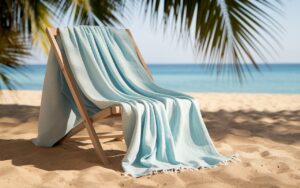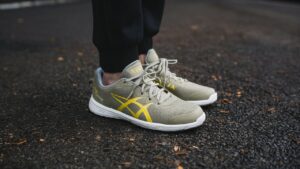Wool is the best material for a winter coat due to its warmth, durability, and water-resistant properties. Wool coats are available in various styles and thicknesses, from thick wool pea coats to sleek wool topcoats.
A winter coat is an essential item in any cold climate wardrobe, providing warmth and protection from the elements. With so many materials available, choosing the best one for your winter coat can be overwhelming. Wool is a natural fiber that is a popular choice for winter coats.
It is warm, durable, and water-resistant, making it ideal for cold and wet weather. Wool coats are available in various styles and thicknesses, making them a versatile choice for any winter outfit. Other materials, such as down and synthetic fibers, can also provide exceptional warmth and insulation. Ultimately, the best material for your winter coat will depend on your personal preferences and needs.

Choosing The Right Material For Your Winter Coat
When it comes to staying warm and protected during the winter season, choosing the right material for your coat is crucial. The material you select will determine the coat’s warmth, insulation, durability, and longevity. Here are a few key factors to consider when choosing the material for your winter coat.
Warmth And Insulation
One of the most important factors to consider when selecting a winter coat is its ability to provide warmth and insulation. The material should be able to trap heat and keep you cozy in cold temperatures. Here are some materials known for their excellent warmth and insulation properties:
- Down: Down-filled coats are known for their exceptional warmth. The fluffy feathers provide excellent insulation and retain body heat effectively.
- Wool: Wool is a natural fiber that offers great warmth and insulation. It’s also water-resistant, making it suitable for cold and wet weather conditions.
- Fleece: Polar fleece is a synthetic fabric that is lightweight, soft, and provides good insulation. It’s an excellent choice for lightweight winter coats or layering.
Durability And Longevity
Another important aspect to consider when choosing a winter coat material is its durability and longevity. You want a coat that will withstand harsh weather conditions and last for several seasons. Here are some materials known for their durability:
- Gore-Tex: Gore-Tex is a waterproof and breathable fabric that offers excellent durability and protection against the elements. It’s a popular choice for high-performance winter coats.
- Canvas: Canvas is a sturdy and durable material that can withstand rough use. It’s commonly used in workwear-inspired winter coats.
- Wool blends: Coats made from wool blends, which combine wool with synthetic fibers, are often more durable and resistant to wear and tear.
Choosing the right material for your winter coat is essential for staying warm, comfortable, and protected during the colder months. Consider the warmth, insulation, durability, and longevity of the material to ensure you make the best choice for your needs.
Wool: The Classic Choice
When it comes to winter coats, wool has stood the test of time as a classic choice. Its natural warmth, durability, and water resistance make it an ideal material for battling the cold and wet weather that winter brings. From timeless pea coats to sophisticated topcoats, wool offers a range of styles and thicknesses to suit various preferences and needs.
Types Of Wool Fabrics
Wool comes in different varieties, each with its unique characteristics. Here are some common types of wool fabrics used for winter coats:
- Merino Wool: Known for its softness and excellent insulation properties.
- Cashmere: Renowned for its luxurious feel and exceptional warmth.
- Tweed: A durable, coarse woolen fabric with a distinctive pattern.
- Lambswool: Soft and resilient, making it suitable for various coat styles.
Caring For Wool Coats
Proper care is essential to maintain the quality and longevity of wool coats. Here are some tips for caring for your wool winter coat:
- Regularly brush your coat to remove surface dirt and lint.
- Avoid hanging your coat in direct sunlight to prevent fading.
- Use a garment bag for storage to protect the coat from moths and dust.
- Consider professional dry cleaning to ensure thorough and safe cleaning.
Synthetic Fabrics: Modern Innovations
Synthetic fabrics have revolutionized the winter coat industry with their modern innovations. These materials offer a range of benefits, from lightweight warmth to waterproofing, making them a popular choice for winter outerwear.
Polar Fleece For Lightweight Warmth
Polar fleece is a go-to choice for those seeking lightweight warmth in their winter coat. This synthetic fabric is known for its insulating properties and soft texture, providing a comfortable and cozy feel without adding bulk.
Gore-tex For Waterproofing
When it comes to waterproofing, Gore-Tex stands out as a top-performing synthetic fabric. Its advanced membrane technology repels water while allowing moisture to escape, keeping you dry and comfortable in wet and snowy conditions.
Down-filled Jackets: Ultimate Warmth
For the ultimate warmth in winter coats, down-filled jackets are the way to go. Filled with insulating down feathers, they provide exceptional heat retention and are perfect for cold weather. Stay cozy and stylish all winter long with this top choice material.
Understanding Down Fill Power
Down fill power refers to the quality and insulating ability of the down used in jackets. The higher the fill power, the better the jacket’s warmth-to-weight ratio.
Synthetic Vs. Natural Down
Synthetic down is man-made and often less expensive, while natural down comes from ducks or geese and provides superior warmth and breathability.
When it comes to staying warm in the winter, down-filled jackets are the ultimate choice. With unparalleled insulation and lightweight comfort, they are a staple for cold weather.
- Down fill power determines jacket quality
- Synthetic down is affordable, natural down is premium
Whether you’re hitting the slopes or braving the city streets, a down-filled jacket will keep you cozy and stylish all winter long.
Fashion Meets Function
For the best winter coat material, look no further than wool. It’s a natural, warm, and water-resistant fabric, perfect for cold and wet weather. Whether you prefer a thick wool pea coat or a sleek wool topcoat, wool is the ideal choice for fashion that meets function in the winter.
Fashion Meets Function: What Material is Best for Winter Coat
When it comes to choosing a winter coat, it’s important to consider both fashion and function. After all, you want to look good while staying warm and protected from the elements. In this article, we’ll explore some of the best materials for winter coats that combine style and practicality.
Tweed And Corduroy For Style
Tweed and corduroy are two materials that add a touch of sophistication to any winter coat. Tweed is a classic material that’s known for its durability and warmth. It’s a versatile fabric that can be dressed up or down, making it perfect for any occasion. Corduroy, on the other hand, is a soft and cozy fabric that’s perfect for colder weather. It has a ribbed texture that adds depth and dimension to any coat. Both materials come in a variety of colors and styles, so you’re sure to find one that suits your taste.
Combining Materials For Aesthetics And Comfort
Sometimes, the best winter coats are made from a combination of materials. For example, a coat made from wool and cashmere provides both warmth and luxury. Similarly, a coat made from Gore-Tex and polar fleece is both waterproof and breathable. Combining materials allows designers to create coats that are both functional and stylish, so you can look good while staying warm and dry.
In conclusion, choosing the right material for your winter coat is crucial if you want to stay comfortable and stylish during the colder months. Tweed and corduroy add a touch of sophistication, while combining materials provides the best of both worlds. So, whether you’re looking for a classic wool pea coat or a sleek topcoat, be sure to consider the material before making your purchase.
Special Mention: Sustainable And Alternative Materials
Hemp: An Eco-friendly Option
Hemp is a sustainable material for winter coats.
Innovative Recycled Fabrics
Recycled fabrics offer eco-friendly alternatives for winter coats.
Care And Maintenance Of Winter Coats
Proper care and maintenance of winter coats are essential to ensure their longevity and performance. By following the appropriate cleaning tips for different materials and implementing suitable storage solutions for off-season, you can preserve the quality of your winter coats and keep them looking their best year after year.
Cleaning Tips For Different Materials
It’s crucial to clean winter coats based on their specific materials to maintain their quality and appearance. Here are some cleaning tips for different materials:
- Wool: Dry clean wool coats to prevent shrinkage and maintain their shape.
- Down: Use a front-loading washing machine and special down detergent for washing down coats.
- Faux Fur: Gently hand wash faux fur coats and air dry them to preserve their softness.
- Leather: Wipe leather coats with a damp cloth and apply leather conditioner to keep them supple.
- Waterproof Fabrics: Follow the manufacturer’s instructions for cleaning and reproofing waterproof coats.
Storage Solutions For Off-season
During the off-season, proper storage of winter coats is essential to prevent damage and maintain their condition. Here are some storage solutions:
- Clean Before Storage: Ensure coats are clean and dry before storing them to prevent mold and mildew growth.
- Use Breathable Garment Bags: Store coats in breathable garment bags to protect them from dust and pests.
- Avoid Plastic Bags: Never store coats in plastic bags, as they can trap moisture and lead to musty odors.
- Hang in a Cool, Dry Place: Hang coats in a cool, dry closet with ample airflow to prevent moisture buildup.
- Protect from Moths: Use cedar blocks or lavender sachets to deter moths and protect coats from damage.
Making The Purchase: What To Look For
When buying a winter coat, it’s important to consider various factors to ensure that you’re getting the best value for your money. From assessing the quality and price to considering the fit and comfort, there are several key aspects to keep in mind.
Assessing Quality And Price
When evaluating the quality of a winter coat, look for durable materials such as wool, down, or high-quality synthetic fabrics. Check the stitching and seams for strength and durability. Additionally, consider the insulation and water-resistant properties of the coat to ensure adequate protection from the elements.
Price is also a crucial factor to consider. While it’s important to stay within your budget, investing in a higher quality coat may offer better long-term value as it is likely to last longer and provide superior protection.
Fit And Comfort Considerations
Ensure that the coat provides a comfortable fit that allows for easy movement while still leaving room for layering underneath. Pay attention to the length of the sleeves and the overall silhouette to ensure a flattering and functional fit.
Consider features such as adjustable cuffs, a lined collar, and a hood for added comfort and versatility. Additionally, check for proper ventilation to prevent overheating and ensure breathability.
Accessorizing Your Winter Coat
Matching Hats And Gloves
When styling your winter coat, don’t forget to match it with hats and gloves that complement the overall look. Opt for coordinating colors or patterns to create a cohesive and stylish ensemble.
Layering For Extra Warmth
To stay extra warm during the cold winter months, consider layering underneath your coat. Add thermal tops, sweaters, or fleece-lined shirts for additional insulation without compromising on style.
Conclusion: Your Ideal Winter Coat
When choosing the ideal winter coat, it’s important to consider the best material for warmth and durability. Wool is a popular choice for its natural warmth, durability, and water-resistant properties, making it perfect for cold and wet weather. Whether it’s a thick wool pea coat or a sleek wool topcoat, there are various styles and thicknesses to suit your preferences.
Balancing Warmth, Style, And Budget
When it comes to finding your ideal winter coat, you’ll need to balance three key factors: warmth, style, and budget. While you may be tempted to splurge on the most expensive coat you can find, it’s important to consider how well it will actually keep you warm and whether it fits your personal style.
If you live in an area with mild winters, a lightweight coat made of materials such as polar fleece or mohair may be sufficient. However, if you’ll be facing extreme cold temperatures, you’ll want to invest in a heavier coat made of materials such as wool or down. Keep in mind that these materials can be more expensive, but they will provide the warmth you need to stay comfortable in harsh winter weather.
Final Recommendations
After considering all factors, our top recommendations for your ideal winter coat would be a wool coat or a down jacket. These materials offer excellent warmth and durability while also being stylish and versatile enough to fit any outfit.
If you’re on a tight budget, consider looking for wool or down coats on sale or secondhand. You can also opt for synthetic down alternatives, which are often more affordable and still provide good warmth.
No matter what material you choose, make sure to prioritize warmth and comfort above all else. With the right winter coat, you’ll be able to stay cozy and stylish all season long.
Frequently Asked Questions
What Material Coat Is Best For Winter?
The best material for a winter coat is wool. It is warm, durable, and water-resistant, making it ideal for cold and wet weather. Wool coats come in various styles and thicknesses, providing options for different preferences. Additionally, puffer jackets filled with down or synthetic fibers are also great for warmth and insulation in extremely cold conditions.
What Is The Warmest Type Of Winter Coat?
The warmest type of winter coat is typically made of wool. Wool is a natural fiber that provides warmth, durability, and water resistance, making it perfect for cold and wet weather. Wool coats come in various styles and thicknesses, from thick wool pea coats to sleek wool topcoats.
Which Type Of Jacket Is Best For Winter?
The best type of jacket for winter is a wool coat. Wool is warm, durable, and water-resistant, ideal for cold weather.
What Is The Best Filling For A Winter Coat?
Wool is one of the best fillings for a winter coat. It is a natural fiber that is warm, durable, and water-resistant, making it ideal for cold and wet weather. Wool coats come in various styles and thicknesses, from thick wool pea coats to sleek wool topcoats.
Down or synthetic fiber-filled puffer jackets are also excellent choices for the warmest type of winter coat.
Conclusion
Wool is the best material for winter coats due to its warmth and durability. Wool coats come in various styles suitable for different preferences. When choosing a winter coat, consider wool for its natural insulation and water-resistant properties, ideal for cold and wet weather conditions.








